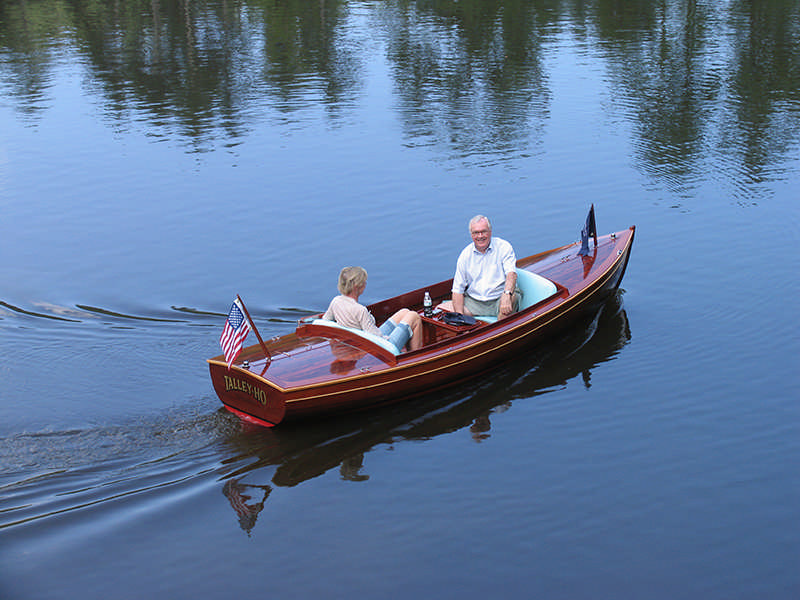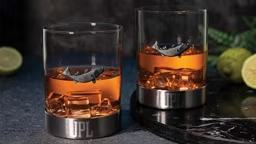
Our lakeside cabin may be well-equipped for boating. You may already have a fishing skiff with kicker outboard for early-morning fishing, and a bowrider for tubing and riding. But, something might be missing – what about an evening cruiser, something that can handle your family and maybe a few guests for a nice slow dinner tour around the lake? What would make it even better would be a quieter motor and no smoke. Would an electric boat fit that bill?
The Technology
The short answer is yes. Today’s market for electric boats is vast compared to what it was even 10 years ago. A quick lap at a boat show or Google search for “electric boats” reveals a plethora of choices, from canopied cruisers to small electric outboard skiffs. If you want to go silent and burn no fuel, there are many options.
Though there are speed records set with electric boats (and they’re fast!), most pleasure craft powered by electricity, hybrid or solar power are designed for slow cruising and enjoying a lake or river at sedate speeds. Battery technology today is quite adequate for this recreation. Boats will run for hours (sometimes all day, depending on the level of charge and the applied use) on a charge, then, when plugged in, charge back up overnight. The batteries are much like those used in current hybrid and electric cars, which means they’ll withstand many years of charge-and-discharge cycles before needing replacement.
Cruising, Fishing, Fun
Electric and hybrid boats come in all styles. Most popular hulls are displacement (non-planing) style in the form of monohull cruisers. These designs take enthusiasts back to the early days of boating; their style is elegant and nostalgic, with sweeping lines and more often than not, a permanent canopy top to keep occupants comfortable while projecting a look that harkens back to simpler times.
The other popular style is more modern, like that of a pontoon or deck boat. Both allow for larger parties of family and friends. The great thing about electric power is there’s no expectation of big speed since the whole idea is to cruise in comfort and in style. Of course, the lack of engine noise and fuel smell just adds to the overall experience.
The crafts can be equipped as spartanly or as luxuriously as you’d like them to be. Since most electric boat builders are smaller, custom shops, you can typically add accessories as you’d like. Extra seating, high-end stereos, custom upholstery and gel coat colors are among the many options available.
Fishing crafts with electric power are also gaining popularity. Small single-person catamarans and skiffs are ideally suited to electric outboard power. An advantage of owning an electric fishing rig is it allows access to many lakes and ponds that are off limits to gasoline-powered boats. In addition, they’re easier to transport: no fuel tanks, no smell and no mess in the back of an SUV.
Care and Feeding
Certainly, an electric boat requires some extra accommodations when compared to the typical gas-powered rig. First to consider is the charging station. Pay particular attention to the manufacturer’s recommendation; it might be wise to call in an electrician to help create a charging area/outlet that’s near where the boat will be stored, is easy to use, and is safe. Water and AC electricity make for a deadly cocktail, so all the proper precautions must be taken.
Not unlike a gas-powered boat, an electric boat’s wiring and control systems are critical, and maintaining them will help guarantee a long life with less trouble. Generally, that means keeping things dry. Though today’s electronics are designed to withstand moisture, they’re not designed to withstand immersion. Keeping an electric boat covered, afloat and ventilated will help it live longer.
Service
Though electric boats are gaining popularity, dealers are still somewhat rare. Before you buy, check to see who might service your boat. If the manufacturer of your dream boat is not nearby, and there’s no local dealer, check around to see which local marinas might be apt to service your craft. Many have zero experience with electric boats, so be prepared for that possibility – and the potential for having to trailer your craft somewhere to get it serviced.
Outlook
Though the immediate future for electric boats is likely an expansion of what they’re best suited for presently – cruising and sightseeing – some builders are already expanding the scope for electric power. Nautique Boats, known worldwide for their V-8-powered competition waterski boats, has already powered one of its tournament ski hulls with electric power … and it’s a hit with skiers and drivers alike. Using two special electric motors powered by an automotive battery pack, this electric Nautique recharges in 4½ hours and can power the boat through a half-day of tournament-level skiing.
The prototype boat is not available to the public yet, but it’s extremely promising for those who want to get away from gasoline power, even for activities such as skiing or high-speed cruising. Epic Boats already builds and markets a 40 mph, 188-horsepower electric boat that’s especially suited for wakeboarding and other high-intensity water sports, and it only needs 7 hours to fully recharge.
What to look for
When shopping for an electric boat, much of what to look for is the same as when shopping for a traditional craft. A thorough visual inspection of the fit and finish, construction, hull, layup, interior, fittings, and drivetrain – all are the same and all are very important, no matter the power source. However, there are a few more items to check with electric-powered boats:
Battery life and recharging time
Today, most boats will last at least 4–6 hours at cruise speeds (many will go much more than that) and at least 2–3 hours at full speed. Boats should be able to recharge overnight, at most.
Access
Batteries, electric motor, wiring and drivetrain should all be easily accessible so they’re not tough to work on. A local dealer not versed in electric drivetrains may not want to bother working on your boat if everything’s not easily reachable.
Integrity
All electric connections, especially the charging port, should be sealed and protected.
Warranty
The builder should be willing to stand behind not only the hull construction, but electric motors and battery packs.
Service
Where can the rig be serviced? This is most important. You’re literally dead in the water without someone to maintain and service the rig – preferably close to your cabin.
See also Cabin Boat Buying Made Easy










